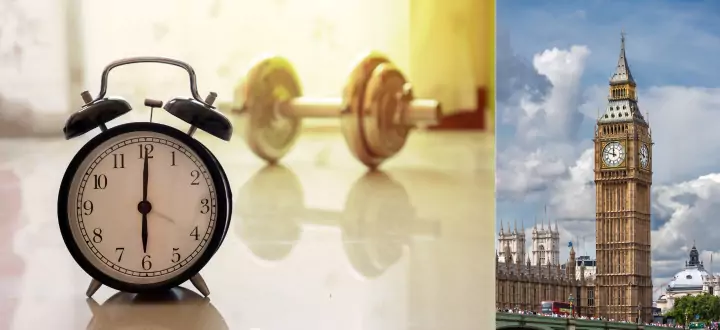
The best time to visit the UK depends on what you want from your trip, but most travelers find late spring (May and June) or early autumn (September) offer the most pleasant weather and smaller crowds. During these months, you’ll enjoy mild temperatures, long daylight hours, and a wide range of cultural events and natural beauty.
If you prefer warm weather and buzzing festivals, peak summer in July and August brings lively cities and plenty of activities, but you should expect higher prices and bigger crowds. For those who appreciate peaceful sights and festive charm, visiting in winter offers budget-friendly rates and unique holiday experiences, even though the weather can be cold and days are shorter.
Planning your visit around your interests will help you make the most of your time in the UK, whether you want outdoor adventures, historic tours, or lively city life. Each season has its own atmosphere and advantages, making the UK a great destination year-round.
Best Time to Visit the UK: Key Considerations
When planning your UK trip, you’ll want to consider the weather, crowd levels, and prices throughout the year. Your experience will vary depending on when you go, what you want to do, and your budget.
Seasonal Weather Overview
The UK has four distinct seasons and the weather changes significantly between them. Spring (March to May) brings milder temperatures and blooming gardens, with highs from 12°C (54°F) to 18°C (64°F). Summer (June to August) has the warmest and driest weather, with highs of 20–25°C (68–77°F) and the longest daylight hours—over 16 hours in some areas.
Autumn (September to November) features cooling temperatures, more rainfall, and beautiful leaf colors. Expect highs between 12°C (54°F) and 20°C (68°F), with days getting shorter. Winter (December to February) is cold and often wet, with temperatures usually between 5°C (41°F) and 9°C (48°F). Snow is possible, especially in Scotland or on higher ground, though it rarely lasts.
It’s always wise to pack layers and a waterproof jacket, no matter the season, as the UK weather can change quickly.
Crowds and Pricing Across the Year
Peak season for UK travel is July and August, when school holidays drive up prices and bring big crowds to popular sights. Flights, trains, and hotels are often more expensive, and long waits are common at top attractions.
Shoulder season—late spring (May, June) and early autumn (September)—offers a balance between decent weather and fewer tourists. Prices are a bit lower, and you’ll find better availability for hotels and tours.
Off-peak or low season runs from November to March, except around Christmas and New Year. You’ll find the best deals and smallest crowds, but shorter daylight hours and some attractions may be closed or have limited hours. Outdoor activities can be limited by cold weather and rain during these months.
Month-by-Month UK Travel Guide
| Month | Weather Highlights | Events or Pros |
|---|---|---|
| January | Cold, wet, possible snow | Low prices, quiet cities |
| February | Chilly, some rain/snow | Budget travel options |
| March | Cool, early signs of spring | Daffodils bloom |
| April | Mild, changeable | Easter, gardens awaken |
| May | Warmer, longer days | Chelsea Flower Show |
| June | Pleasant, bright, festivals | Start of summer events |
| July | Warmest, busy everywhere | School holidays, Wimbledon |
| August | Hot, crowded, festivals | Edinburgh Festival |
| September | Mild, less busy | Harvest events |
| October | Cooling, autumn colors | Halloween events |
| November | Cold, rainy, darker | Guy Fawkes Night |
| December | Cold, festive, dark early | Christmas markets |
You can plan your visit based on your interests: spring for gardens, summer for outdoor festivals, autumn for countryside color, or winter for city breaks and holiday lights.
UK Seasons Explained: What to Expect
The weather, daylight hours, and activities in the UK change with each season. Knowing how each time of year impacts travel will help you choose the right months for your trip plans.
Spring in the UK: Blooms and Mild Weather
Spring in the UK, from March to May, is the start of warmer days and blooming flowers. Temperatures rise from around 12°C (54°F) in March to 18°C (64°F) in May. Rain is common but usually light, so packing a rain jacket or umbrella is smart.
Gardens and parks come alive with daffodils, bluebells, and cherry blossoms. London’s parks, the Lake District, and the Cotswolds are especially pretty. Crowds are smaller compared to summer, making travel and sightseeing more relaxed. Days get longer, with up to 15 hours of daylight in late May.
If you like low-key festivals and outdoor walks, this is a great time for UK travelling. Just expect temperatures that can change quickly, and bring layers to stay comfortable.
Summer in the UK: Festivals, Outdoor Events, and Travel
From June to August, summer UK travelling is marked by warm weather and busy attractions. Average temperatures range from 15°C (59°F) to 25°C (77°F). It rarely gets very hot, so outdoor activities are pleasant.
This is the season for major festivals like Wimbledon, the Edinburgh Festival, and Glastonbury. Public parks, beaches, and historic sites get crowded, especially during school holidays in July and August. Daylight can last up to 17 hours in Scotland, making sightseeing days long.
Expect higher prices for hotels and flights during this peak period. If you want quieter experiences, book popular attractions and accommodations early or consider less-visited towns. Outdoor concerts, street food markets, and castle events fill many calendars.
Autumn in the UK: Colours and Fewer Crowds
Autumn in the UK runs from September to November. Temperatures fall from about 20°C (68°F) in early September down to 9°C (48°F) by November. Rain increases, but you’ll get to see beautiful fall colours, especially in woodland areas like the New Forest and Scotland.
Crowds thin out, so museums and coastal spots are more peaceful. This is a good time to enjoy walking tours, harvest festivals, and local food events. Travel costs for flights and hotels often drop after summer ends, providing better value.
If you enjoy photography, the golden leaves and gentle sunlight can make for great shots. Daylight hours grow shorter, so plan outdoor activities earlier in the day.
Winter in the UK: Festive Charm and Off-Peak Advantages
Winter lasts from December through February. Expect short days, with as little as 7–8 hours of daylight and average temperatures around 9°C (48°F). In higher regions or northern areas, you may see snow, but most places get rain and cold winds instead.
The holiday season brings Christmas markets, festive lights, and events in cities like London, Edinburgh, and Bath. Many attractions have fewer visitors, so you won’t have to wait in long lines. Hotels and flights are usually cheaper, except during the holiday period.
Some outdoor attractions close for winter, but museums, galleries, and theaters remain open. If you like cozy pubs, winter walks, or seeing city lights, this is a good time. Pack warm clothes and plan for early evenings.
Highlights and Tips for Every Season
Each season in the UK has its own major sights, events, and travel needs. Whether you want to join local celebrations, see famous places, or pack smart, knowing the details by season can help you make the most of your trip.
Major Events and Local Festivals
Spring brings the Chelsea Flower Show in London (May), a top event for garden lovers. Easter often has special parades and egg hunts across the country. In summer, you can catch Wimbledon tennis, the historic Trooping the Colour for the King’s birthday, and the huge Edinburgh Festival Fringe in August.
Autumn is known for food festivals, such as Abergavenny Food Festival in Wales and Bonfire Night in early November with fireworks all over the UK. Winter stands out for Christmas markets like Manchester’s Christmas Markets, the magical Hogmanay New Year celebration in Edinburgh, and festive light displays in cities such as London and Bath.
Many events fill up hotels and transport fast, so book early if you plan to visit during well-known festivals.
Recommended Destinations for Every Season
Spring is ideal for countryside spots such as the Cotswolds and Lake District, when flowers bloom and the weather is mild. London is pleasant in spring with fewer crowds, making it perfect for sightseeing.
Summer is the best time to travel the UK for sunny days. Coastal towns like Brighton, St Ives, and Blackpool come alive. Edinburgh is a top summer destination thanks to its festivals, and Scotland’s Highlands offer great hiking.
In autumn, parks in London, Yorkshire, and Wales show beautiful fall colors. Bath and Cambridge are peaceful and picturesque after the busy summer.
Winter is best in cities with holiday markets and historic charm like London, Edinburgh, Manchester, and York. For those who enjoy the cold, head north to Scotland for a chance to see the Northern Lights.
Packing and Travel Advice
The UK weather is often unpredictable. Bring layers such as T-shirts, sweaters, and a warm, waterproof jacket—no matter the season. In summer, pack an umbrella and sunblock, since showers and sun are both common. For autumn and winter, carry a hat, gloves, and a scarf.
Comfortable, waterproof shoes are important for walking on city streets and trails. Plan for shorter daylight hours in winter—museums and landmarks may close earlier. Book accommodation and major attractions early during summer and festivals to avoid high prices and full hotels.
Public transport works well in cities and between towns, but train tickets are often cheaper if bought in advance. If you plan road trips in rural areas, check schedules and maps, especially in winter, when some routes may close.
Frequently Asked Questions
Different times of the year in the UK offer unique experiences, including lively festivals, mild weather, or good deals. You should consider when crowds are at their highest, which months usually bring the most rain, and what times bring cheaper prices for travel.
What are the peak tourist seasons in the UK?
The peak season in the UK falls during July and August. These summer months bring the largest tourist numbers, mostly because of school holidays and the warmest weather. Popular attractions, hotels, and transport options are often crowded and more expensive.
During which months can travelers enjoy the best weather in the UK?
You will find the most pleasant weather from late spring through summer, especially in June, July, and August. These months often have mild to warm temperatures, longer days, and more sunshine. The weather is good for outdoor activities, but always be prepared for sudden rain.
What is considered the off-peak period for cheaper travel to the UK?
Off-peak travel is usually from November to March, except for late December when holiday events draw many visitors. During these months, you can find lower prices on flights and accommodation. Attractions are also less busy, but some places may have shorter opening hours or close for the season.
When is the rainy season in the UK, and how might it affect my visit?
The rainiest months are typically from November through February, though rain is possible year-round. Winter weather can be cold, windy, and damp. If you visit during these months, plan for indoor activities and pack clothing such as a raincoat and waterproof shoes.
For those visiting England, Scotland, and Ireland, when are the optimal travel times?
For England, the best times are usually in late spring (May to June) and early autumn (September), when the weather is pleasant but crowds are smaller. In Scotland and Ireland, June to August brings the warmest and driest weather, but May and September are also good choices to avoid peak crowds.
When is the best time to experience cultural events and festivals in the UK?
You can enjoy many major events and festivals from May to September. Summer offers highlights like Wimbledon, music festivals, and the Edinburgh Festival in August. Spring and early summer bring events such as the Chelsea Flower Show and cultural parades in cities like London and Edinburgh.



